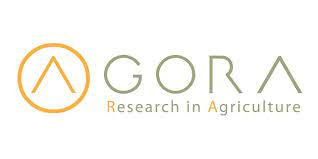Validity of Six Month L-Thyroxine Dose for Differentiation of Transient or Permanent Congenital Hypothyroidism
Muhammet Asena1, Meliha Demiral2, Edip Unal2, Murat Öcal1, Hüseyin Demirbilek3, Mehmet Nuri Özbek21Diyarbakır University of Health Sciences Turkey, Gazi Yaşargil Training and Research Hospital, Clinic of Paediatrics, Diyarbakır, Turkey2Diyarbakır University of Health Sciences Turkey, Gazi Yaşargil Training and Research Hospital, Clinic of Paediatric Endocrinology, Diyarbakır, Turkey
3Hacettepe University Faculty of Medicine, Department of Paediatric Endocrinology, Ankara, Turkey
Objective: The tendency to reduce thyroid stimulating hormone (TSH) referral cut-off values in congenital hypothyroidism (CH) neonatal screening programs has resulted in an increase in the incidence of CH, but also the referral of infants with mild transient elevation of TSH. Therefore, there is a need to develop markers for differentiation of transient elevated TSH and permanent CH as early as safely possible to avoid unnecessary treatment. The aim was to evaluate sixth-month L-thyroxine (LT4) dose as a predictive marker for differentiation of transient elevated TSH and permanent CH.
Methods: Data of patients who had been followed after referral from the neonatal screening programme between the year 2010 and 2019 in a tertiary pediatric endocrine centre were examined retrospectively.
Results: There were 226 cases referred, of whom 186 (82.3%) had eutopic thyroid gland, and 40 (17.7%) had dysgenetic gland. In patients with a dysgentic gland there was a non-significant tendency to have lower diagnostic free thyroxine concentration but significantly higher TSH compared with those with eutopic gland (p=0.44 and p=0.023, respectively). Patients with thyroid dysgenesis required higher initial and six month LT4 doses compared with those with eutopic glands (p=0.001). Receiver operator curve analysis showed the optimum cut-off value for LT4 at six months for transient vs. permanent CH was 2 µg/kg/day (sensitivity 77% and specificity 55%), regardless of etiology. Similarly, in patients with eutopic glands the optimum cut-off value for LT4 dose at six months for permanent vs. transient patients was 2 µg/kg/day (sensitivity 72% and specificity 54%).
Conclusion: Results suggest that LT4 requirement at six months of therapy may be a good marker for predicting transient TSH elevation in patients with eutopic thyroid gland, thus facilitating the decision to halt LT4 therapy.
Manuscript Language: English



























